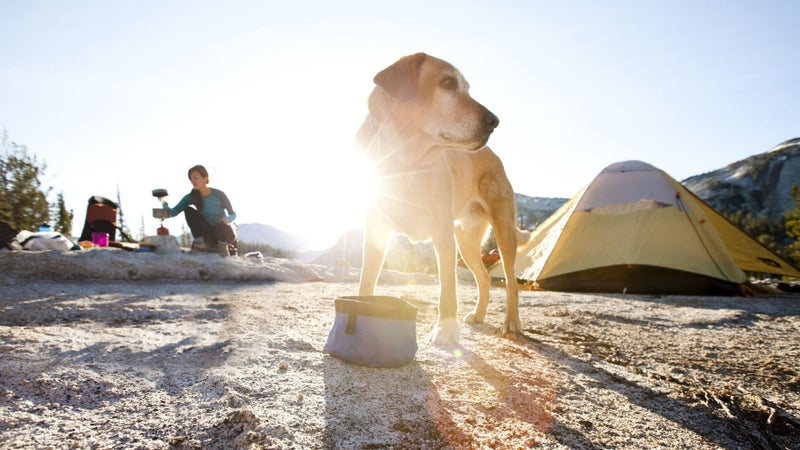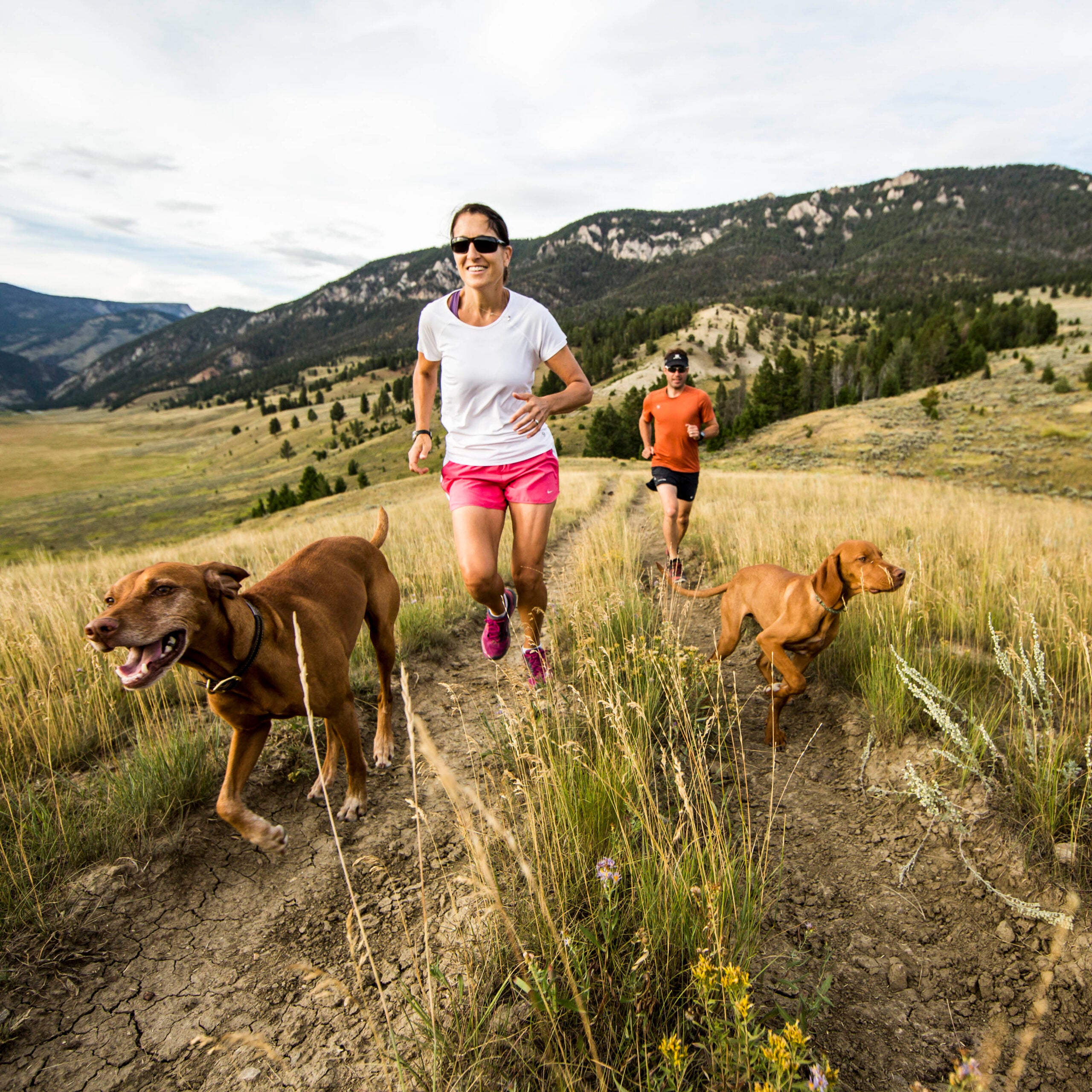During the warm months of summer, it’s a lot easier for a person to cool down than it is for a dog. Your dog doesn’t have the luxury of shedding layers when she heats up, so she relies on her complex physiology to regulate her temperature. But sometimes your pup just wants to keep up with you on a run, and her drive overrides her ability to dump heat. As her favorite adventure buddy, you’re responsible for monitoring her for signs of overheating and taking preventative action. Here’s how to do it.
Understand How Dogs Manage Heat
Like humans, dogs can overheat all year round. But particularly in the warmer and more humid seasons, they can experience two types of heat-related illness (HRI). Non-exertional HRI happens when a dog is left in a car or other compact space on a hot day with minimal ventilation, and her core body temperature rises so much that she can’t cool down. Exertional HRI is exercise-induced and can occur when the dog joins you for activities like walking, running, swimming, fetching, or bikejoring. The activity can cause her body to generate more heat than she can dissipate—which can lead to a dangerously high core temperature.
“Heat-related illness, and in particular exertional HRI, is a serious and potentially fatal health condition,” says Russ Kelley, Scientific Services Nutritionist for ™. “Owners who can read their dogs’ signs are able to help keep them safe while enjoying summer fun.”
A dog’s normal body temperature ranges from 99.5 to 102.5 degrees Fahrenheit, but a temperature of 104 or higher means your dog is at a higher risk for HRI, which can take any of three forms.
-
Heat stress: Signs may include increased thirst, excessive panting, a widened or flat tongue, pasty saliva, apprehension or lack of focus, and cheeks pulled back to reveal molars.
-
Heat exhaustion: Signs may include weakness or stumbling, sunken and dry eyes, vomiting or diarrhea, muscle tremors, uncontrollable panting, and dryness in the nose, mouth, and gums.
-
Heatstroke: Signs may include unresponsiveness or confusion, dark urine or lack of urine, seizures, coma, lack of coordination, and collapse.
Dogs maintain their core body temperature through multiple body systems, but if they push it too hard, their natural cooling methods, like panting, don’t suffice. Panting initially helps them stay cool because it expels hot, internal air that is therefore exchanged with cooler, external air. But in the summer, that external air is hot, too, and they don’t cool off quickly enough. That’s when they need your help.

Help Safeguard Your Dog From HRI
Before embarking on a long run, hike, or bike ride with your dog, it’s good practice to check the temperature and humidity level. Avoid strenuous activity when the heat index is greater than 75 or the outdoor temperature added to the humidity percentage exceeds 140. Otherwise, start slow and take frequent breaks in the shade to help cool yourself and your pup down. If you can plan your activity in advance, increase your dog’s water intake three to five days ahead of time. Make sure to bring plenty of water if you know you won’t be near a drinking fountain or other water source, and know how much water your dog should be drinking ahead of time. For instance, a 44-pound dog between 0.5-1.5 gallons per day, plus more if they’re exercising.
If your dog experiences heat stress, take a break in the shade in an open area with a breeze, or call it a day. Help reduce your dog’s core temperature by applying cool water to her paw pads and belly or by rubbing alcohol on her ears, armpits, and groin. Use cool water to rinse any pasty saliva out of her mouth.
In the event of heat exhaustion or heatstroke, take your dog to the nearest vet immediately. Before you go, place a cool, wet towel underneath her, and follow the same steps for applying water and rubbing alcohol as used for heat stress. But never place her in extremely cold water or put ice to her skin—it could increase the risk of dehydration and make matters worse.
Train Your Dog to Handle Warmer Weather
If your dog is used to being indoors most of the time, it’s best to ease into more strenuous outdoor activities. Proper acclimation and conditioning are crucial. “If dogs aren’t running in the winter, they can lose muscle tone and endurance,” says Josh Miller, a Eukanuba™pro trainer and owner of Wisconsin’s Riverstone Kennels. “Along with that they may pack on extra pounds. To take a sedentary dog and start working him hard in hot temperatures and high humidity can cause him to overheat more quickly than a dog in peak condition.”
Any number of factors—from weight, age, hair coat thickness, other health conditions—can put your dog at higher risk of HRI. Providing good air circulation, shade, and access to fresh water can all help keep your dog cool in higher temperatures. Keep in mind that dogs can still overheat while training in water, especially the shallower and warmer it is. “Always exercise with your dog in the cool parts of the day, starting with short outings and gradually increasing in time,” Miller says. And just remember, if you see any signs of heat stress, get out of the heat and take a break immediately.
For more information on exertional HRI, visit .
For more than 50 years, Eukanuba™ has been dedicated to researching and creating premium nutrition with a dog-first mentality. They believe inside each dog there is an athlete that when fueled and trained can be unleashed to reach their full potential. Eukanuba™ wants nothing more than to help dogs achieve a healthy, active life. Learn more at

